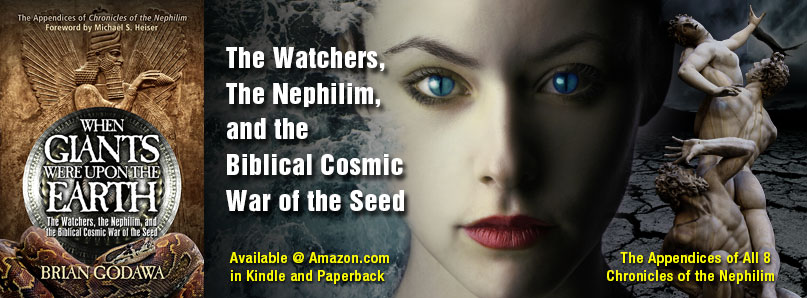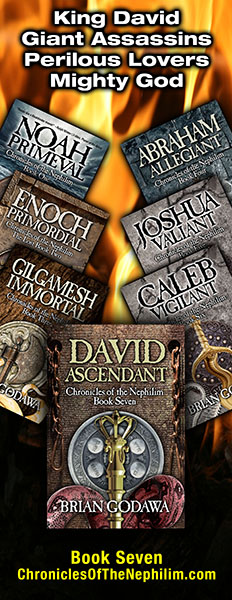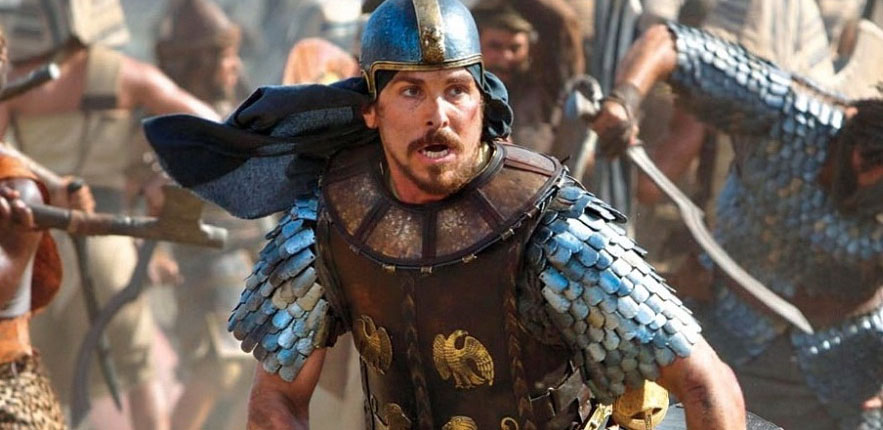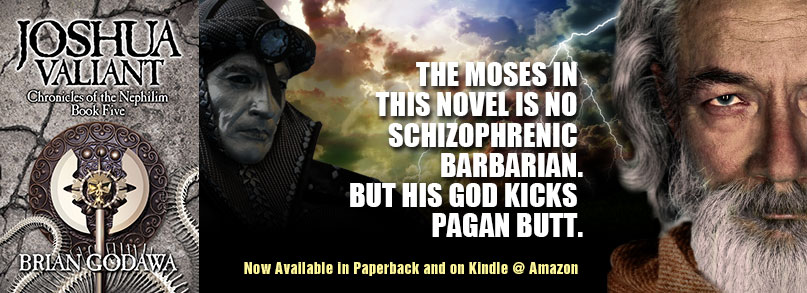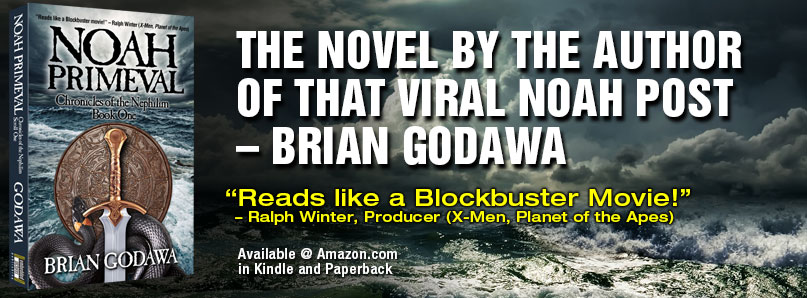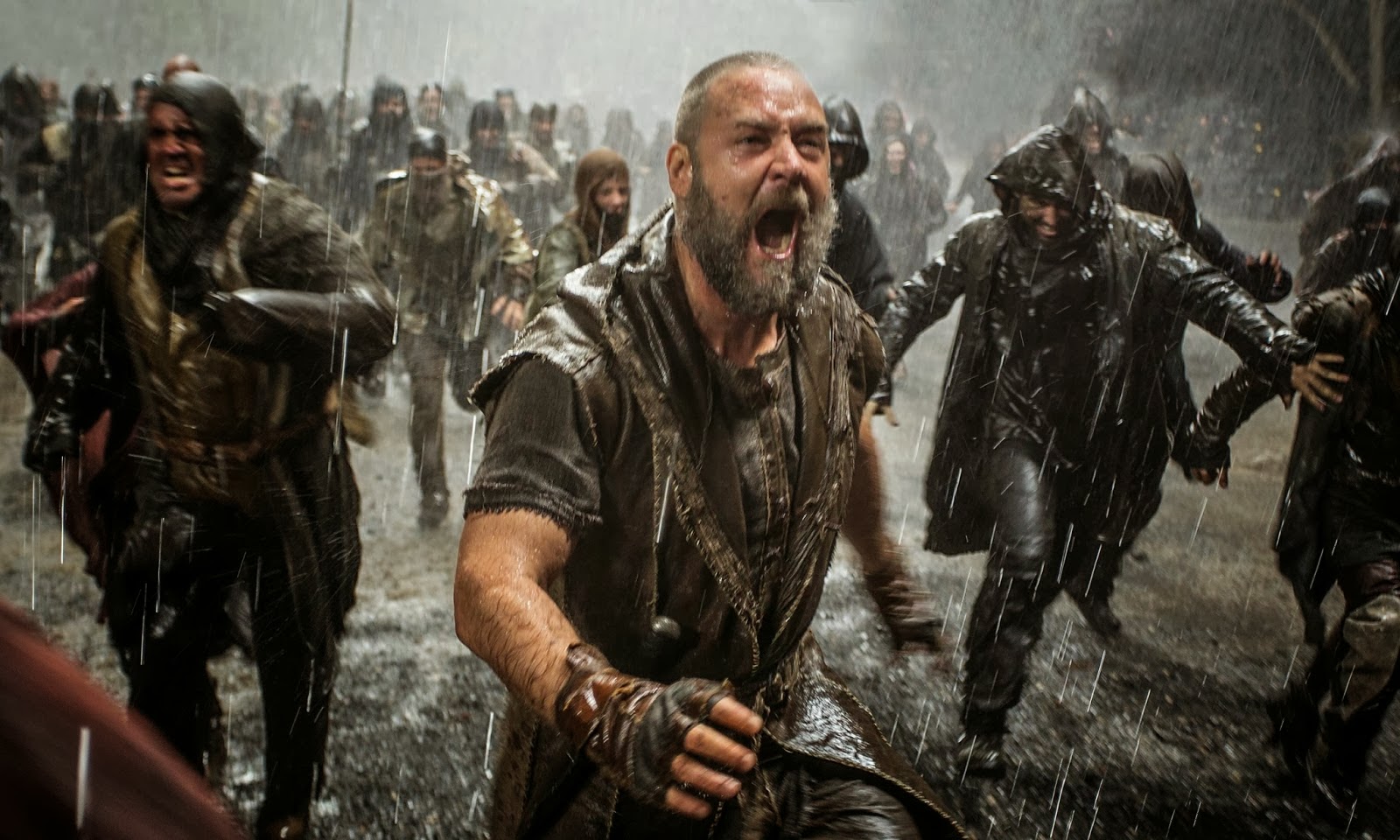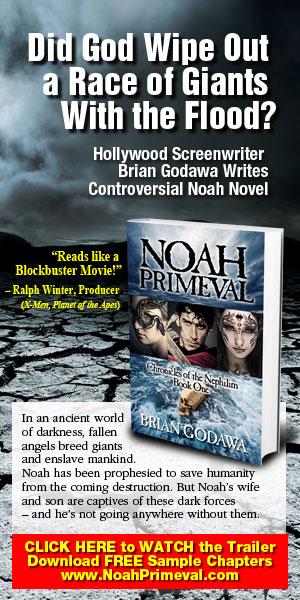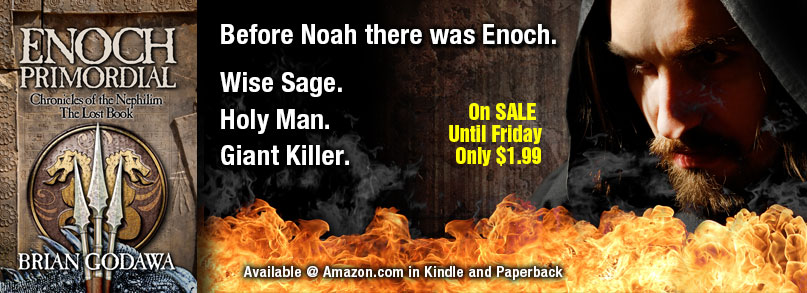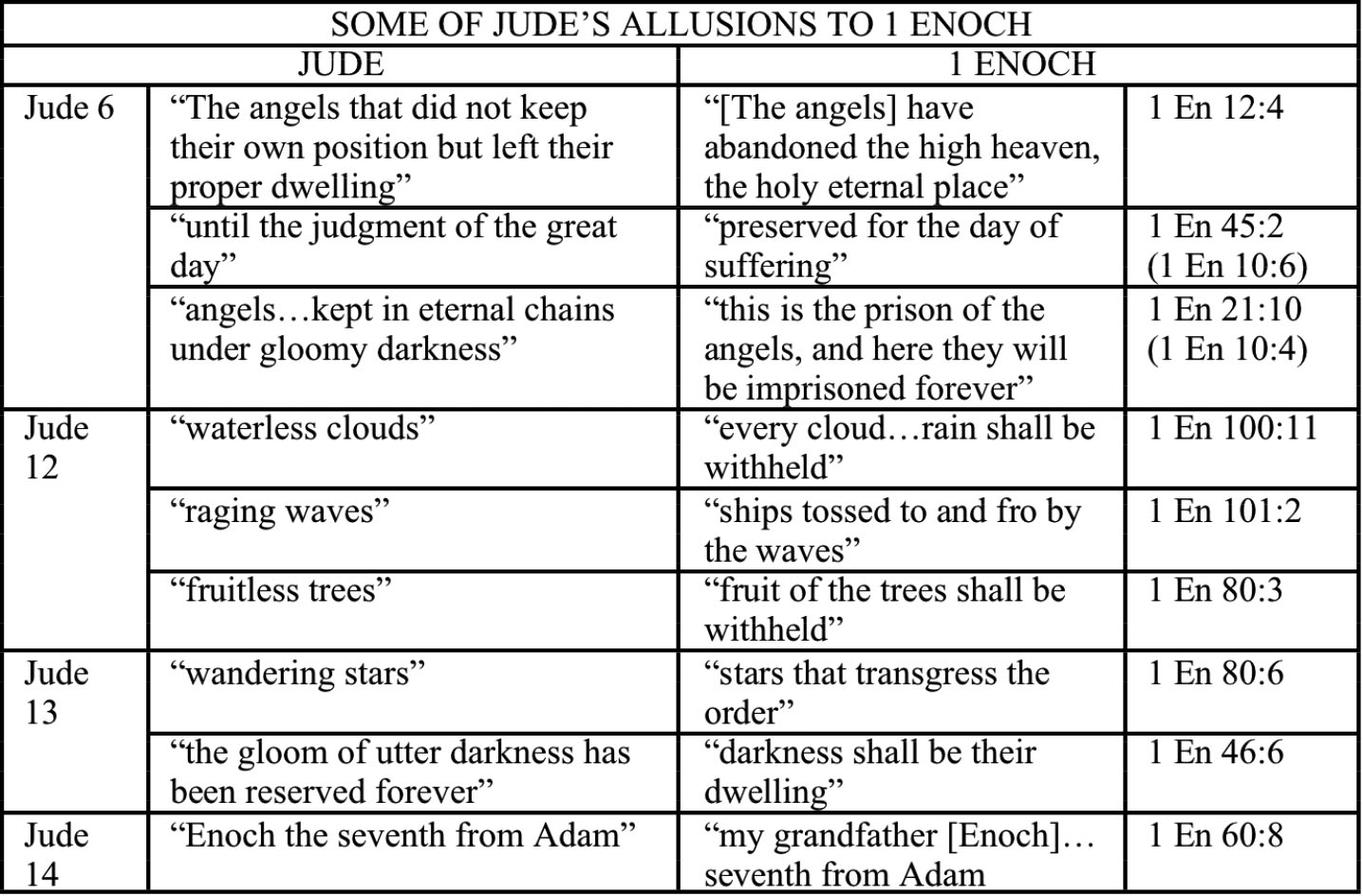Check page 60 for the feature on Brian Godawa:
http://www.joomag.com/magazine/christian-review-magazine/M0457831001414699003
Supernatural / Religious
Deliver Us From Evil: Muscular Spirituality Vs. Foolish Materialism
Maybe Deliver Us From Evil is just another demon possession movie that’s combined with a cop crime story.
But I doubt it.
Written and Directed by Scott Derrickson, this movie is inspired by the true story of Ralph Sarchie, a New York cop who encountered murders involving demon possession. He joins up with a Roman Catholic exorcist to solve the crimes, and in the process, he rediscovers his lost faith.
Okay, horror is not for everyone. But in this modern world that denies the supernatural, along with God, sometimes the best way to break through the rabid materialistic worldview of our culture is through horror. It’s a kind of apologetic that proves God by proving supernatural evil. If people believe there is a devil, it’s a pretty self-evident corollary that there is a God.
 What I like most about Derrickson’s cinematic portrayal of demon possession (This and The Exorcism of Emily Rose), is his understated realistic approach. He doesn’t rely on special effects gimmicks or make up that are impossible in the real world. The things that happen are mostly the kind of things that really do happen in demon possession cases. So no heads turning around or impossible levitations. Don’t get me wrong, there are contortions, dilated pupils, cuts appearing on bodies, and even preternatural strength and multiple voices. But these are all documented around the world to have occurred in such cases. He doesn’t “Hollywoodize” that stuff to an unbelievable extreme, which is what makes a lot of other demon movies just goofy. I’m not against adding fantasy or beefing it up if you are playing to certain genre demands. I’ve done so myself. But when you are dealing with true stories like Derrickson does, it makes it more scarier to be more realistic.
What I like most about Derrickson’s cinematic portrayal of demon possession (This and The Exorcism of Emily Rose), is his understated realistic approach. He doesn’t rely on special effects gimmicks or make up that are impossible in the real world. The things that happen are mostly the kind of things that really do happen in demon possession cases. So no heads turning around or impossible levitations. Don’t get me wrong, there are contortions, dilated pupils, cuts appearing on bodies, and even preternatural strength and multiple voices. But these are all documented around the world to have occurred in such cases. He doesn’t “Hollywoodize” that stuff to an unbelievable extreme, which is what makes a lot of other demon movies just goofy. I’m not against adding fantasy or beefing it up if you are playing to certain genre demands. I’ve done so myself. But when you are dealing with true stories like Derrickson does, it makes it more scarier to be more realistic.
Now, while I didn’t find this one as scary as say Emily Rose or other demon possession movies like Paranormal Activity or The Last Exorcism, it is still compelling with its share of frights and a couple of eerie shots that make your skin crawl. His demonic “floor scratching” sounds (a common element of the genre) are the scariest I’ve ever heard. Scariness can be a very subjective thing, and the more you’ve seen, the less seems scary. So if you don’t normally watch horror, this will probably be plenty scary.
What I really found fascinating was the priest who teamed up with the cop. The priest, Mendoza, breaks all the stereotypes of priests in movies. He’s young, not old; cool, not archaic, flawed, not holy, forgiven, not judgmental, and best of all, the wise mentor, not the fool. As Sarchie uncovers the spiritual reality behind the murders, he struggles with his own lost faith. But the essence of the spiritual battle is brought out with Christian clarity like I’ve never seen before in a horror movie. In one moment, the priest tells him something like, “You have seen a lot of evil in your job, no doubt. But that is secondary evil. But until you’ve seen primary evil, you do not know true evil.” And of course, demonic evil is primary evil.
 But the priest is not a false holy monk, either. He’s a real sinner, who sinned grievously AS A PRIEST. But what makes this portrayal so different from all the other movies that try to make priests out to be all secret adulterers and child molesters and hypocrites, is that this one shows a priest who confesses that sin and repents and turns back to God. That is grace. That is what the secular world cannot understand. Because Derrickson is a Christian, he can bring that kind of nuance and complexity to a spiritual character as flawed but heroic. This is the director that should be directing the next movie on King David, not another Hollywood secularist trying to subvert a sacred narrative.
But the priest is not a false holy monk, either. He’s a real sinner, who sinned grievously AS A PRIEST. But what makes this portrayal so different from all the other movies that try to make priests out to be all secret adulterers and child molesters and hypocrites, is that this one shows a priest who confesses that sin and repents and turns back to God. That is grace. That is what the secular world cannot understand. Because Derrickson is a Christian, he can bring that kind of nuance and complexity to a spiritual character as flawed but heroic. This is the director that should be directing the next movie on King David, not another Hollywood secularist trying to subvert a sacred narrative.
SPOILER ALERT: The priest explains that the cop must confess his sins because our unrepented sins are the dark secrets that supernatural evil can use against us. Wow. Only when Sarchie confesses his sins, is he “covered” by God’s power. This is all done in the context of Roman Catholicism, where Sarchie confesses to Mendoza, who then says, “I absolve you.” So anti-Catholics will not like this. Those less bothered by theological distortions, will argue that it WAS his experience that is the story, and the principle behind it is true, that confession of sins to God and forgiveness is our redemption and power to fight such primary evil (distortions notwithstanding).
Another problem as I see it with the genre is that demon possession movies all must end with the third act as the Exorcism sequence. This makes it so hard to come up with something new. Cause it’s usually a priest and others in a room repeating the exorcism ritual as the person manifests supernatural reactions. What have we not seen before? Many times movies try to outdo each other with more spectacular effects, but again, Derrickson does not bow to that cheap way out, though he certainly has a few goodies to offer.
Again, they use the Roman Catholic ritual of exorcism. Look, I realize that they do use that in real life, AND I realize it is more cinematic to engage in a ritual that has progression to it. But I’ve always hoped that people don’t think that recounting words like some kind of magic formula is how to fight a demon. In the Bible, it is the faith of the believer and his calling upon JESUS CHRIST to cast the demon out that does it (And this surely does occur at the end of the exorcism in the movie). But I’ve always been amazed at how in the New Testament, casting out demons was a relatively quick procedure, certainly not as dramatic for a movie. They would cast out in the authority of Jesus Christ, and BAM, they left. Now, Jesus does say that there are some tough cases that require prayer and even fasting. So there are more difficult cases to be sure, but it was not the norm in the first century.
I am studying a lot about Jesus’ ministry as an exorcist for my next novel, Jesus Triumphant, so it is going to be quite a challenge. The real question that many believers never explore is: Exactly what are demons? Everyone assumes “fallen angels.” But the Bible does not say that they are fallen angels, it just calls them evil spirits. Where do they come from? There is an interesting option not normally discussed among polite company. I will be dealing with that in a way I have not yet seen done. Unfortunately, you won’t know until next year, cause I have not written the book yet. But you can find out the theology of it all in my book When Giants Were Upon the Earth: The Watchers, The Nephilim, and the Biblical Cosmic War of the Seed, here on Amazon.
Controversial First Chapters of David Ascendant Now Online
You think you know the story of King David.
Wait till you read this.
You can read the controversial first chapters of David Ascendant online here. It’s the subscribe page, find the “Click Here for free David Ascendant chapters” at the bottom.
Then go pre-order it on Kindle here at Amazon.com.
Available in paperback this Saturday, Nov. 1.
New Exodus Movie: Moses as Schizophrenic and Barbaric? Uh oh, not again, please?
Okay, so I’m thinking, Steve Zaillian writing and Ridley Scott directing the new movie Exodus: Gods and Kings means that, though they are both agnostics or atheists, they are at least great storytellers who make movies that people actually see. You know, as in good stories. Maybe, just maybe, they won’t screw it up like Aronofsky did with Noah. The trailer already looks very cool showing some of the Ten Plagues.
But then again there was that “trick the Christians” Noah trailer…
Look, I’m not talking about ridiculous fundamentalist demands to reproduce the story as the Gospel according to the Ten Commandments starring Charlton Heston. That movie had tons of flaws to it and departed from the Bible at key points, yet religious movie watchers still loved it because it didn’t depart from the Biblical themes.
I am talking about the subversion of Judeo-Christian heroes and their stories with a secular agenda. I hope it’s not happening again.
Here is the Christian Bale quote about Moses from Christianity Today online:
“I think the man was likely schizophrenic and was one of the most barbaric individuals that I ever read about in my life,” the forty-year-old star said. “He’s a very troubled and tumultuous man who fought greatly against God, against his calling.”
Look, Bible heroes are NOT perfect sinless creatures. Only Jesus fits that bill. Yes, Moses murdered a man, and he had a character arc that went from being adopted and raised as a pagan Egyptian to a conversion to his troubled and tumultuous faith. He had difficulty trusting Yahweh. He didn’t want to be God’s spokesman because he stuttered. And he even had arguments with God.
But Schizophrenic? Barbaric? Really?
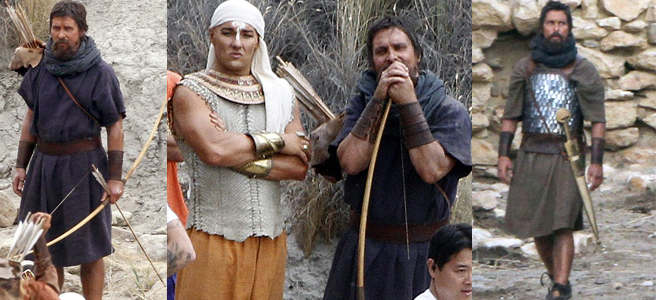
I don’t know. Look at him. Do you think he might also have sociopathic or pathological tendencies? A Moses with self-loathing Anti-Semitism?
First a Noah who is an environmentalist whacko vegan animal rights madman with delusions.
Now, a Moses who is a schizophrenic barbarian?
What next? A Jesus with Christophobia and bipolar delusions, who hates God, and wants to sin?
Oh wait, Scorsese already did that in the 80s and it flopped big time too. Whew.
I only hope that the comment is more a reflection of the actor’s own ignorant bigotry than of the actual movie.
But I’ll tell you on release week.
I pray it isn’t happening all over again.
UPDATE: Darrick reminded me: Then again, Ridley Scott did give us Jesus as an alien.
Not a good track record, there, either, brilliant studio execs.
P.S. I wrote a novel, Joshua Valiant, that tells the story of the conquest of Canaan after the Red Sea event, and I have a very human, very flawed Moses and Joshua in a very brutal world — with plenty of Biblical sex and violence — and gritty real faith. Check it out here.
The Subversion of the Serpent in Aronofsky’s Noah
In my previous post, I explained how subversion in movies and other storytelling works. The storyteller basically retells someone else’s story, but does so within his own worldview and thereby changes the meanings of otherwise familiar memes and themes of the received cultural narrative. I then explained how Aronofsky subverted the Judeo-Christian Biblical God with his movie Noah into a humanistic metaphor of a “silent god” who has no real existential difference from a nonexistent god. I shared my conclusion that Christian defenders of the film were guilty of autobiographical projection of their own meanings onto the movie and therefore neglecting to address the director’s actual vision.
One may argue therefore that Aronofsky’s atheist subversion doesn’t work on them! Aha! Well, I wrote all about how storytelling in movies and TV works on us whether we know it or not by bypassing the intellect and connecting through emotional dramatic incarnation. That was in Hollywood Worldviews. No time to repeat all that. I’m interested in trying to exegete the director’s intent, because we owe that to the artist before we decide what we personally draw out of the movie.
But also, remember, Aronofsky is drawing from an eclectic mixture of Kabbalah, humanism, environmentalism and other sources so he is not going to have a systematic one-for-one correspondence with any one system. He carries the influence of those ideas, and about the only consistent connection between them all is their intent to subvert the Judeo-Christian sacred narrative.
“I’m Godless. And so I’ve had to make my God, and my God is narrative filmmaking, which is — ultimately what my God becomes.”
– Darren Aronofsky
Another way of saying this is that his religion is storytelling, another perspective shared by many in Hollywood who have been deeply influenced by Joseph Campbell’s mythological worldview.
Serpent Ho!
One of the things that rubs the viewer confused while watching the movie Noah is the positive image of the Serpent in the story. We see the Serpent shedding his bright green skin to come out a black snake with extra eyes (Reminding me of the mystical “third eye” crows in Game of Thrones). The Serpent’s skin then becomes the magical talisman birthright of Adam passed down to Noah. Then this Serpent skin is wrapped around the arm of the right person, it glows with presumable enlightenment and blessing. Tubal-cain, the villain, takes the skin away before Noah can receive it from his father. But it brings no glowy favor to him. Ham steals it and it disappears until the end of the movie where he gives it back to Noah. Noah then wraps the skin around his arm and it glows with favor as he touches the two little granddaughters. So the skin of the Serpent in this movie is clearly a positive image.
Defenders of the movie have lined up to try to explain away the positive image of the serpent by saying the skin represents the original goodness of the serpent’s creation before he became evil. But I think they may be projecting their own interpretation onto the imagery.
First, there is no reference at all in the Genesis text to the Serpent as being good before the Garden. It is possible, though not probable because it is deliberately not addressed in the story. It just describes him as more cunning than the other animals created (Genesis 3:1). All imagery of the Serpent throughout the Bible is always negative. Even the bronze serpent on the pole in Numbers 21 that healed the stricken was still the image of the deadly snakes hung in judgment (healing through judging the serpent). And Christ’s death on a cross likened to that serpent on a pole is also a visual metaphor for Christ taking on our sin (John 3:14) or “becoming sin for us” (2Corin. 5:21). That’s negative serpentine imagery.
[New addition in response to Peter Chattaway’s apologetic for the Serpent] Genesis 1:6 says “God created the great sea monsters.” That Hebrew word for “sea monsters” is actually tanninim, which means sea dragons. In Canaanite and other Mesopotamian creation stories, the sea dragon or sea serpent represents chaos that the chief gods overcome to create the world. So in Genesis, God is subverting that image by “defanging” the standard negative power symbol into a mere creature created by God and under his sovereignty.
In other places, this sea dragon is also called “Rahab,” but is the same sea serpent monster of chaos that the writers describe as symbolic of God’s covenantal power over the chaos (Job 9:13; 26:12; Psalm 89:10; Isaiah 30:7; 51:9)
But later, in other poetic texts, Leviathan the sea dragon takes up this personification of the serpentine negative power of chaos, only to be described as easily controlled or overpowered by Yahweh (Job 3:8; 41:1; Isaiah 27:1; Psalm 74:14; 104:26)
This negative symbolic Serpent imagery concludes in Revelation 12:9 when Leviathan is recast as the Dragon trying to kill Messiah. Here we see the description: “And the great dragon was thrown down, that ancient serpent, who is called the devil and Satan, the deceiver of the whole world…” (Revelation 12:9)
Mr. Chattaway tries to create a more diluted negativity of the Serpent in other Biblical texts but never quite does the job. Jesus telling his disciples to be shrewd as serpents, innocent as doves still reinforces the negative image of the serpent, tying it to the “cunning” we heard about in the Garden. But in ironic poetic fashion, Jesus plays an extreme counter to that image with the innocence of doves to communicate that we are not to have the evil of the serpent.
The Egyptian staffs turning into serpents is also a negative image, but Moses’ staff transformation into a snake that eats the others is simply another ironic mockery of God saying that he is sovereign over evil and can overcome it with its own negativity. Remember the sea dragon domestication? Similar thing here.
The Dan reference in Genesis 49 is a bit more interesting, but suffice it to say that the tribe of Dan resided in the area of Bashan which meant “place of the Serpent.” So the use of viper imagery there plays off that original pagan notion, but describes Dan’s fighting like a serpent biting a heel, which is another poetic play of saying Dan will be to his enemies like the evil Serpent of the Garden is to the offspring of the Woman” (Genesis 3:15).
There actually is one very powerful positive image of serpents in the Old Testament, but I’m going to make Mr. Chattaway find it for himself. And if he does, it won’t change the fact that the serpentine imagery related to the Serpent in the Garden and extended into Rahab, Leviathan and Satan is always negative. In the Bible the Satanic Serpent is never thought of in positive terms.
OMG, I almost forgot: Jesus stressed that the devil or Satan, the “serpent of old,” “was a murderer from the beginning, and does not stand in the truth, because there is no truth in him. When he lies, he speaks out of his own character, for he is a liar and the father of lies.” (John 8:44–45). There is no Biblical notion of the Serpent being good at the beginning. That is for a very theological purpose of identifying the Serpent with evil, and ultimately with the people of Canaan who would be dispossessed from the Land.
[End of new addition]
In the pagan ancient Near East of Israel’s day, however, the serpent had far more positive imagery than negative. Here are some of them as listed by scholar James Charlesworth in his book, The Good & Evil Serpent: Life, wisdom, magic, health, fertility, transcendence, creation and light, divinity, earth-lover, energy and power, immortality. (1)
Remember, Aronofsky is a self-proclaimed atheist with mystical mythical dalliances. So his spin is going to express his worldview through the narrative. And what does he do with that “Serpent of old,” that bringer of temptation to Original Sin? That Father of Lies? He inverts the Serpent from a negative image to a positive one of life, enlightenment and blessing.
This illustrates another worldview influence of cosmic humanism which has affected many in Hollywood through Joseph Campbell’s mythological mish mash and mystical monism, a kind of atheistic theology (contradictory, I know, but very relevant to Aronofsky’s view).
(Excerpt from The Power of Myth by Joseph Campbell)
MOYERS: In the Christian story the serpent is the seducer.
CAMPBELL: That amounts to a refusal to affirm life…
CAMPBELL: Why was the knowledge of good and evil forbidden to Adam and Eve? Without that knowledge, we’d all be a bunch of babies still in Eden, without any participation in life…The serpent, who dies and is resurrected, shedding its skin and renewing its life, is the lord of the central tree, where time and eternity come together. He is the primary god, actually, in the Garden of Eden. Yahweh, the one who walks there in the cool of the evening, is just a visitor. The Garden is the serpent’s place. It is an old, old story.(2)
So the Serpent was not influencing man to fall into sin, but rather opening his eyes to enlightenment and autonomy from God. You see, in this scheme, God is either a bully who wants to control man and is foiled by the wise Serpent, or is secretly desirous for man to disobey so he will learn to make his own decisions! In other words, God wants man to grab the control of defining or “knowing good and evil” for himself and not rely upon God. So in this revision, the Serpent is actually a pathway to maturity of humanity, NOT sin.
Thus, the Serpent is a positive image. And this is why at the end of the movie Noah, Illa tells Noah that God wanted Noah himself to decide if mankind was worth saving. Because it is up to man to decide good and evil and to define his fate (NOT God). Sssssound Ssssssimilar to Sssssomething?
In fact, in the beginning of the movie, when Lamech is about to give Noah the Serpent skin, he wraps it around his arm all glowy-like, and their hands are about to touch in an obvious homage to the creation image of Michelangelo’s Sistine Chapel. The creation image of God’s hand about to touch Adam to give him the breath of life. The Serpent is a “creator of life” in this story, not the bringer of death as he is in Genesis. Also, the snake skin is wrapped around the arm in the same way that modern Jews wrap phylacteries or tefillin around their arms. The symbolism of the tefillin wrapping is that they contain little boxes with Scripture in them that is meant to represent God’s Word as the binding source of everything they do (Deut. 11:18). So in the movie Noah, the life-giving Word of God is replaced with the skin of the Serpent. More creepiness.
The heart-like pulsating fruit on the Tree of the Knowledge of Good and Evil in the Noah movie most likely represents the life that Adam and Eve would receive upon eating it. Again, life instead of death.
This could also explain the odd notion that in the film the Watchers are banished by God for wanting to help mankind. That never seemed to make sense in the story. Why would God punish angels for helping mankind? Isn’t that their M.O. after all? But it does make sense if the meaning of this mythological remake is that God wants man to “do it on his own.”
Ironically, the idea that man would become mature by choosing his own destiny (against the pettiness of a jealous angry controlling God) is exactly what the Serpent suggested in the Garden to Eve: “For God knows that when you eat of it your eyes will be opened, and you will be like God, knowing good and evil” (Genesis 3:5).
This humanistic interpretation can be found in critical Biblical scholarship. Liberal scholar James Charlesworth suggests that to “characterize [God] as villain is not impossible, in view of 3:8 (the Garden is for his own enjoyment), and vs. 23 (where he feels ‘threatened’ by the man!) As villain, he is the opponent of the main program.” (3)
Charlesworth then concludes that, “The story of the serpent in our culture is a tale of how the most beautiful creature [the serpent] became seen as ugly, the admired became despised, the good was misrepresented as the bad, and a god was dethroned and recast as Satan. Why? It is perhaps because we modern humans have moved farther and farther away from nature, cutting the umbilical cord with our mother earth?” (4)
Earth worship here is linked to the Serpent as good guy. Ssssssomething Sssssounds Sssssimilar again!
Yes, I do admit that I am engaging in interpretation in this post. More than in my previous ones. And I acknowledge the possibility that I may be wrong in some ways. Is this any different than the projection I am suggesting is going on with defenders of the movie? Not quite the same thing. Because I am not importing my own Judeo-Christian interpretation upon the images of Aronofsky’s in trying to justify it. I am trying to make sense of those images with Aronofsky’s own self-proclaimed worldview.
And that is a subversive worldview indeed.
Or as Genesis would put it, “cunning.”
Buy the novel Noah Primeval, here on Amazon.com in Kindle or paperback. The website www.ChroniclesOfTheNephilim.com has tons of way cool free videos, scholarly articles about Watchers and Nephilim Giants, artwork for the series, as well as a sign-up for updates and special deals.
[UPDATE] So Mr. Chattaway has sought to debunk the critique of the positive Serpent imagery that I and others have pointed out. He goes to great length and detail in a crafty defense of the “positive Serpent” as I will call it. His beef is mostly with the “Noah is Gnostic” meme that he thinks is an unfair description of the movie, and he spends most of his energy addressing Brian Mattson’s post that first made that argument.
He then addresses this post of mine as one of the culprits of the “Noah is Gnostic” meme and says that I “referenced Mattson’s “Noah is Gnostic” theory repeatedly in a post two days ago [… and then] drops the subject in his most recent post,” — this one you are reading.
Well, not really.
Because I like Peter, I am going to give him the benefit of the doubt that he has mistakenly identified my arguments with Mattson’s and then confused my own arguments in this piece as “dropping the subject” as if I saw the weakness of it and tried to change the subject.
I never dropped the subject. I didn’t raise it to begin with. I said that Mattson made some brilliant points, but then I carefully explained my own interpretation of what was going on, which was of a different focus of concern than Mattson’s. I never argued that Noah was Gnostic. Reread my words above and in the previous post. I argued that Aronofsky is most like Joseph Campbell in his drawing from many sources including Gnostic and Kabbalah and other Rabbinic sources. I’ll say it again, for Peter and those who missed it, “Noah is not strictly gnostic or strictly humanist or strictly atheist, and obviously does in fact traffic in Judeo-Christian imagery. Indeed. Aronofsky, like most people does not liturgically follow the dogma of ancient sectarian philosophies and religion. Mattson was not suggesting that. Aronofsky does what most modern modern westerners do: He picks and chooses elements of things he likes from a variety of ultimately incongruous systems of thought.” And then, “Mattson’s claim about the influence of Gnosticism is largely right. No, Noah isn’t a dogmatic or consistent reproduction of one of the various strains of ancient Gnosticism. But in the same way the 2nd and 3rd century Gnostic Gospels subverted the Biblical Gospels by retelling the story of Jesus through a twisted unbiblical paradigm of inversion, so Noah is doing the same thing.”
Like Campbell, one of his influences, Aronofsky picks and chooses from different traditions to create a confusing mixture of ideas that nevertheless happen to have one consistent theme: The subversion of the Biblical Serpent from a negative into a positive image, along with the Serpent’s temptation that man take control of his fate and moral decisions away from a silent and harsh God. (Illa: “The choice was put into your hands because he wanted you to decide if man was worth saving.” –This is the equivalent of the Serpent’s offer of being like God in “knowing good and evil” Genesis 3:5)
Chattaway becomes confused when he relativizes and denigrates the Christian interpretation of the Serpent and then privileges Aronofsky’s Rabbinic Jewish interpretation. He says, “I think part of the problem here is that Christians have been brought up to assume that the serpent in the Garden of Eden was really Satan in disguise. The actual text of Genesis never says this — it simply says that “the serpent was more crafty than any of the wild animals the Lord God had made” — but in this, as in so many other areas, Christians read the Bible through the filter of later traditions rather than reading just what the text actually says.”
Now Chattaway is usually a rather sharp mind, but his blade gets dull here when he completely misses the inherent negativity “of what the text actually says.” The text describes the Serpent as “cunning” or “crafty,” which scholars explain is a word play in Hebrew as an opposite of Adam and Eve’s “naked” innocence. And then of course, we have his temptation and lie. Yes, he is a nasty being and that is what I was arguing. I actually didn’t argue that the Serpent was “really Satan in disguise.”
But then Chattaway dismisses the Christian interpretation as a “later interpretation” without apparent textual basis, while simultaneously avoiding the fact that Aronfsky’s Rabbinic interpretation is also a “later interpretation.” “What the text actually says” is that the Serpent was cunning and was the tempter and deceiver. It doesn’t say that he was good and became evil. THAT is the later tradition that changes the text.
The fact is that everyone is interpreting through a tradition. The question is which is the most Biblical? While Chattaway lists an impressive amount of examples from Rabbinic and other ancient Jewish extra-biblical sources to justify the “Positive Serpent” spin, he fails to address the Biblical argument itself as I have illustrated. Namely that the Serpent has an unbroken inter-Biblical “tradition” of negativity from the Serpent in the Garden to the dragon imagery throughout the Old Testament (Hebrew: tannin), to Rahab, and Leviathan the sea serpent with multiple heads (again, OT), to the seven headed dragon of Revelation. Yes, the New Testament calls the Serpent Satan, but the bigger point is that the meaning of the Serpent from Old to New Testament is as an incarnation of chaos and/or evil. (Read my paper on Leviathan here). That ain’t some “later tradition,” like the Rabbinic one he quotes.
Lest I need to remind Peter that the Christians who wrote the New Testament were in fact Jews, steeped in ancient Jewish tradition. It is a common fallacy to denigrate “Christian interpretation” as if it is something non-Jewish or “anti-Jewish” when in fact, it is the most faithful JEWISH interpretation of the Old Testament.
Bottom line: The Apostle John kicks Rabbi Eliezer’s and Pseudo-Jonathan’s butts when it comes to Old Testament hermeneutics. Canon over fodder. As I said before, Aronofsky’s Noah has surely drawn from Rabbinic and (gnostic influenced) Kabbalah sources, but my argument has been that they are antithetical to Biblical meaning.
Thus when Chattaway quotes writer Ari Handel’s statement about the shed skin of the snake being “a symbol of the Eden that we left behind. It’s a garment to clothe you spiritually,” while this certainly ties in with the sources Chattaway quoted, it doesn’t justify it as a Biblical notion but only as ancient Jewish speculation. And it doesn’t change the creepy fact that in the movie Noah, the Serpent has been transformed into a positive image through the film. Granted, it’s the skin of the Serpent. But the skin is the symbol of the Serpent. And the Serpent is the symbol of lost Eden.
Not in the Bible. The Serpent is the symbol of the enemies of God. What does God actually say of the Serpent? Not that the Serpent is a symbol of what Adam and Eve lost. But rather, “I will put enmity between you [Serpent] and the woman, and between your offspring and her offspring; he shall bruise your head, and you shall bruise his heel.” Genesis 3:15. This is a War of the Seed of the Serpent with the Seed of Eve that I am writing about in an eight volume series of novels called Chronicles of the Nephilim. (Shameless act of self-marketing. Yes, I am a capitalist. Call me Tubal-cain.)
When Chattaway defends Aronofsky’s Kabbalah and Rabbinic interpretive framework over against the Christian Jewish interpretive framework, he merely makes my argument, that the movie Noah and its God and Serpent are not Biblical.
So for a simple summary of the issues:
The Bible: Serpent bad, God good. God decides Man’s value.
Aronofsky’s Noah: Serpent good, God bad (and silent). Man decides Man’s value.
That’s subversion.
FOOTNOTES
1 James Charlesworth, The Good and Evil Serpent: How a Universal Symbol Became Christianized, New Haven: Yale University Press, p. 220.
2 Campbell, Joseph; Bill Moyers (2011-05-18). The Power of Myth (p. 54). Knopf Doubleday Publishing Group. Kindle Edition.
3 Charlesworth, The Good and Evil Serpent, p. 309.
4 Charlesworth, The Good and Evil Serpent, p. 419.
The Subversion of God in Aronofsky’s Noah
Brian Mattson’s brilliant post about the Gnosticism of the Noah movie has struck a cord of truth in a Christian world that doesn’t know why it is bothered by the film, but knows something’s rotten in Denmark. He points out from various gnostic and Jewish mystical texts the monist gnostic and Kabbalah influence on Aronofsky’s interpretation of the sacred Biblical story. Don’t worry if you can’t understand the academese gobbledygook. It will be explained below.
Peter Chattaway tries to discredit this revelation in his bulldog support of the movie, but the snake is out of the bag. The reason Noah is polarizing is because it is a subversion of the Biblical story. This is why both sides have some apparently reasonable explanations for their take. Subversion is the act of retelling a story through the prism of a different worldview or philosophy or theology or politics or take your pick. The nature of subversive storytelling is to work within the cultural memes and received narrative that people are familiar with, but to infuse that narrative with new definitions.
The movie Noah is a subversion of the Judeo-Christian story of the Biblical Noah with an atheist humanistic environmentalism accented with Kabbalah-light.
In this way, I would say that both sides are partly right. In our postmodern world that has argued the death of the author, there is a disdain for objective meaning rooted in the text or authorial intent. Therefore, we have embraced a very subjective “reader response” way of interpreting things. People tend to be more concerned about what they see or get out of a story than what the author may have intended. Thus our narcissistic culture obsessed with what we subjectively feel over what is objectively true. Traditional hermeneutics (or interpretation) seeks to understand what the intent of the author is first, and then to respond with their opinions for or against. It can recognize the subjective experience and even acknowledge that sometimes the intent of the author is not achieved. But it respects the fact that in addition to ambiguities and unintended consequences, there is real authorial meaning in the text, or in this case, story.
What I see happening is that the Christian defenders of the movie Noah tend to be importing their own Biblical interpretations onto the Aronofsky movie, justifying all the Biblical subversion and incongruities with their own ad hoc harmonizing attempts, while virtually ignoring Aronofsky’s own self-proclaimed hodge podge mixture of pagan environmentalism, humanism and atheism and a little Kabbalah mixed in for good po mo measure. In this way, Chattaway and the defenders are right that Noah is not strictly gnostic or strictly humanist or strictly atheist, and obviously does in fact traffic in Judeo-Christian imagery. Indeed. Aronofsky, like most people does not liturgically follow the dogma of ancient sectarian philosophies and religion. Mattson was not suggesting that. Aronofsky does what most modern modern westerners do: He picks and chooses elements of things he likes from a variety of ultimately incongruous systems of thought.
The problem is that dissenters against the film have been unfairly smeared as being obsessed with an unreasonable fidelity to factual Biblical details. Other than the usual few extremists, many of us do not mind that there is creative license taken. Earth to cynics: We get it. It’s okay to make changes to fit the theme of the movie or limitations of the medium. I took a lot of creative license with my own novel, Noah Primeval, and Christians have not attacked me (except for those handful of extremist fundamentalists). What we are concerned about is what the changes add up to mean. What is the storyteller making the story to mean? In this way, dissenters are respecting the director more than the defenders. And since the “auteur” himself has expressed certain aspects of his worldview, such as being an atheist, and humanist with a touch of Kabbalah fancy, we would do well to consider that in our understanding of his movie.
And yes, just because the filmmaker is an atheist doesn’t mean he can’t retell a sacred story, or even do it better than some Christians could. But in many cases that atheism or humanism can actually “repurpose” the story to another view — and it often does. And that is what has happened. The sacred story of Noah has been subverted into a humanistic but ultimately pagan narrative.
If someone made a movie about Martin Luther King Jr. and portrayed him as a religious nut who had hallucinogenic delusions thinking they were from God, and almost murdered white people before turning pacifist, the African American community would rightly be adamantly opposed to such a story (And Hollywood would never do that, would they?). It wouldn’t matter if the filmmakers said, “Hey, lay off, we showed that in the end he brought about real change for civil rights didn’t we?” It matters how you get there.
Mattson’s claim about the influence of Gnosticism is largely right. No, Noah isn’t a dogmatic or consistent reproduction of one of the various strains of ancient Gnosticism. But in the same way the 2nd and 3rd century Gnostic Gospels subverted the Biblical Gospels by retelling the story of Jesus through a twisted unbiblical paradigm of inversion, so Noah is doing the same thing.
I don’t know how much clearer it can be. Aronofsky is an atheist. He does not believe in the God of the Bible. If you doubt this, ask him yourself, “Do you believe that the Biblical Yahweh really exists and is the one true God?” He has said that he believes the Noah story is merely a myth that is not “owned” by the Judeo-Christian worldview. So, Christians and Jews, when he is retelling your sacred narrative about Noah, God is merely a metaphor to him for something else much more important to him. For a different god. It has to be, by his own self-definition.
So what is that god? That is what dissenters are getting at. Appreciate all the similarities with the Bible you want, but you simply cannot argue successfully that Aronofsky is presenting the Biblical God Yahweh. He doesn’t believe in that God.
Case in point: God in the movie Noah. God is “believed” in, but he never speaks. He is silent. Noah has dreams of a Flood and he interprets it as judgment from “the Creator.” Later, Noah believes God wants him to end the human race by murdering his granddaughters. In the end he can’t do it, and we hear from the sage words of Illa that God wanted Noah to decide if humanity was worth saving. But God never speaks up to let us know what he really thinks.
Defenders will say that God was silent because he was withdrawing from the evil (meat-eating) mankind. And since the Flood really happened, well, isn’t that proof that the visions were from God after all? So isn’t that Biblical in result?
Not if you take Aronofsky’s own views seriously. As an atheist, he doesn’t believe in the Biblical God, so if he is retelling a Biblical narrative, the best way to deconstruct God, or to make him in the story as if he wasn’t really there at all would be to claim that he is silent. This is brilliant subversion. Think about it, folks, God NEVER speaks in the entire movie. Not even to tell Noah that he was wrong to almost kill the girls. Even when righteousness is finally achieved in Noah’s “redemption,” God still does not speak. He never speaks. That is not happenstance. There is a reason for that. A Non-speaking God is virtually the same practical thing as a non-existant God. And it is explained when Illa tells Noah that “God wanted you to decide if man was worth saving.”
MESSAGE: It’s all up to us humans, not a god.
Of course, the original sacred narrative requires a “god” in the story, but an atheist director wants to deconstruct that god into a being who is merely believed in, but ultimately is no different than humans making our own meaning. Effectively there is no difference between this “god” and no god at all. This is a common belief of humanism that even if there was a God, he wants us to decide for ourselves. To give us all those nasty commandments is just a jealous judgmental deity who doesn’t want us to grow up and be mature and decide for ourselves what is right and wrong.
Sound familiar, all you Bible scholars? Call it the influence of gnosticism, call it humanism, call it atheism, or not. Just throw out all the “isms” if it’s all too much academic-speak. The point is that all these trajectories have the same origin point: The lie of the Serpent. They all try to circumvent God by positing that man can “know good and evil” for himself. Man is to decide his fate and destiny, NOT God.
Take away God’s propositional personhood and you’ve already reduced him to the functional equivalent of mere subjective belief, which is no different than delusion. This is using a story about God to subvert that God. Remember, Aronofsky is an atheist who believes that man was NOT made in God’s image, but God was made in man’s image. So no matter what interpretation Jews and Christians may bring to the movie, Aronofsky is not affirming the Biblical God. This is not a conspiracy theory, folks. Aronofsky is the one who admitted that he does not believe the God of the Bible. It’s simply how a good atheist uses a sacred narrative to spin his own view against the text.
Now, in the Biblical Noah story, it is very important that God does in fact still talk to the righteous Noah. This is not a silly little unimportant detail that neurotic Christians are needlessly obsessed over. This is everything. God is there and he is not silent. And he is the one who decides what is right and what is wrong, and if mankind is worth saving. We are not the captains of our destiny and the masters of our fate. For that is what the Serpent was saying in the Garden: “For God knows that when you eat of it your eyes will be opened, and you will be like God, knowing good and evil” (Genesis 3:5).
But didn’t the Watchers come from heaven, and didn’t the Flood actually happen just as the dreams predicted? Doesn’t that show that God was real in the story? Well, one of the dreams was drug induced by Methuselah, which places it squarely in the broad mystical tradition that does not require a god for such things. So visions are the religious experiences of mystics or sensitives, but without a God speaking propositionally, they really do not require a god at all. There is a reason why an atheist director never has a God who speaks, because a God who speaks would be a truly existent being.
As for the Watchers, this is where more subversion comes in. Of course there will be some elements that may point to spiritual reality, but the real purpose is to dethrone the living God, so allow the lesser spiritual stuff which satisfies that “myth loving fantasy side” of us, and focus on redefining God and his relationship with man. That is how subversion works. Use the cultural memes and narratives but invest them with new meaning. So including other spiritual realities like angels does not discount the deconstruction of God going on in the story. You can have your angels, but not your Biblical God.
But even with the Watchers, there is a complete inversion going on there as well. In the Biblical Enochian tradition, the Watchers who came to earth were fallen and delivered evil occultic secrets to mankind. So there is a mutual culpability of angelic and human sin that brings on the Flood. And the fallen Watchers were then imprisoned in Sheol for their disobedience. But in the movie, The Watchers gave wisdom to man that was abused. So again, that which is considered negative deception in the Biblical tradition is considered positive wisdom in the movie.
And that brings us to the Serpent. In my next post, I will explain how the Serpent and the Garden of Eden is subverted in Noah.
P.S. When The Matrix came out, I am the first to say that while I had some profound connections to certain visual elements in the film, such as the “born again” scene when Neo wakes up in the pod, or other “Christ imagery,” I nevertheless had to face the fact that it was NOT a Christian themed movie. No matter how much I personally experienced it. Now, we are all free to ignore what the author says and simply interpret the story through our own subjective viewpoint, but that is disrespect toward the authors that we would not want for ourselves and it illustrates our narcissistic culture. The Wachowski brothers, who are avowed Nietzschean atheists were using Christian memes and blending them with other religious elements to subvert them with their “army of metaphors” as a story that ultimately deified man as saving himself. They were subverting the well known Judeo-Christian worldview and I wrote about it here.
Deconstructing Noah’s Arc: Godawful Storytelling
I’m the “little guy” who wrote a blog post critiquing an early draft of the Noah script because of my own research into the subject matter. Well, when things went south in the studio screenings of the movie with religious audiences, the blood hound media scoured the internet for negative quotes, found my post, and it went viral.
I thus became Satan for Paramount and its elitist director of dark unsympathetic sick and twisted heroes, Darren Aronofsky.
I finally saw the movie. And now I know why Paramount and its hired Christian marketers would not let me into an early screening to correct my analysis of the early script of Noah.
Because I was right.
Not only that, but the differences between the script and the final movie are so negligible that I won’t have to change a single word of my critique. Just go back and read that and you’ll get the sick twisted agenda that seeps through every frame of this movie.
Wait. I take it back. It’s actually worse than the script.
But right up front, I apologize for giving so much time and attention to preparing people to watch the movie with a thoughtful eye to see what is good first and then describe the bad. Sometimes movies are so bad that what little good in them is so overwhelmed it’s like – well, like being drowned. My problem was I took it too seriously.
The Noah movie is ugly. It’s anti-human exceptionalism. It’s enviro-agitprop. And it’s poorly done. I can’t recommend this movie, not just because of it’s godawful theology (or should I say “earthology”), but because it’s godawful filmmaking. Like The Last Temptation of Christ. All the controversy overshadowed the fact that it was just plain terrible storytelling. Same here.
And people complain about Christian movies being so bad because they are agenda driven while suffering from poor storytelling and preachiness. Well, how about a new term: “Bad atheist movies” that suffer from poor storytelling and preachiness.
I have to say something to all those Christian leaders and film critics who saw the early screenings and kept defending the movie, saying in reference to my viral blog post, “The movie is different, the movie is different. You can’t talk about the movie cause you haven’t seen it.”
Shame on you. Shame on you because you knew when you were saying it, that it wasn’t true and I was right. You were tools. And Aronofsky is laughing at you behind your backs. He’s subverting your sacred story and he’s not even doing it well, but you’re still supporting it. I spoke up for the truth, but you wouldn’t, and you led me like a sheep to the… Okay, maybe I’m not that righteous. I’ve lied before too. As the movie Noah would say, “meat-eating is in all of us” or something like that.
Was Anything in it Good?
Well, uh… the movie captures a visual picture of the Flood that has never before been captured. That’s cool. Bursting waters, a Doré homage of people on a mountaintop being pulled into the rising waters. Okay, Flannel graph successfully overthrown. I liked that.
Oh, and uh people are shown as really evil so they deserved to die. That’s true. (Even though the evil is really more about meat-eating than anything else.)
Ummm.
Okay, now I want to talk about what I didn’t like about it.
“On the nose” dialogue. Flat characters that you just don’t care about. A sick twisted hero that you just don’t care about. Look, I know your hero has to have a character flaw, but this is so extreme that you can’t stand Noah, and you just want to leave the theater.
Noah becomes so convinced that the wickedness of man is in everyone (that is the original sin of being bad to animals and the earth – and did I say meat-eating, you carnivores?) that they all deserve to die, including his family — and then Noah becomes obsessed with killing his newborn granddaughters on the ark. Of course he doesn’t. That’s good. Whew. Not. Good. Enough.
Aronofsky gave us his “brilliant” portrayals of sick twisted drug addicts, sick twisted wrestlers, and sick twisted ballerinas. And now, in a fit of creative originality, a sick twisted Noah! Do you think maybe there’s a pattern here that might say something more about Aronofsky than anything else?
The fact that Noah wrestles with justice and mercy through the story is a good thematic idea. Justice without mercy is cruelty, but mercy without justice is also cruelty. But as Aronofsky said in an interview Noah’s journey is God’s journey of being so judgmental that he has to learn mercy. Because you see, Aronofsky has said he is a humanist. Humanists believe man is the measure of all things and man is not created in God’s image, God is created in man’s image. So it makes sense within his atheism to portray God as learning to be more merciful since God is merely an extension of man’s own imagination.
Remember when I said the script has Noah as a humanist who is more compassionate than God because he just can’t bring himself to kill his family like God wanted him to? Still in there. Yep.
Cliché stereotypical bad guy. Now whenever you want to know who a storyteller hates, look at his bad guy’s belief system and rationale and you’ll find a comparison to a modern day counterpart. Okay, so Tubal-cain is the bad guy. He is an urban “industrialist” (the movie calls the cities, “industrial”) who mines the earth for resources, claims property rights to owning land, hunts animals, eats meat, uses a primitive gun (I’m not kidding you, he probably got it from ancient aliens), he keeps emphasizing that man is created in the image of God and superior to the animals, and that we are supposed to subdue them and have dominion over them. All this while he rapes, murders, pillages and eats meat. So that kind of thinking is supposed to lead to that kind of evil behavior, got it? Sooooo, let’s see, who are those in todays’ world that believe in industry, mining for energy, private property rights, in hunting, guns, and say that God created man in his image to have dominion. Tubal–cain is basically an evil caricature of Judeo-Christian Western civilization. Seeing behind the shallow stereotype of evil reveals as much about the storyteller’s perception of what worldview he considers leads to such evil.
Christians, you are tools being played if you think that this movie is anything BUT a subversion of the Biblical God and an exaltation of environmentalism and animal rights against humans. Those who say that hurting the earth is just part of the sins of mankind in the story are missing the deeper point. No matter what “sins” of man that are portrayed in this story, they are only expressions of the ultimate sin, which is to sin against the earth. Every time it talks about man’s sin and God’s intent, the context is always “creation” not God, and not man as God’s image. The guy who preaches “man as God’s image” is the villain. “Creation” as in “Nature” is the metanarrative here, NOT God.
For those of you Christians who are fooling yourselves, just ask yourself this: Does Aronofsky believe in the God of the Bible as holy or in the earth as holy? I think you know the answer. And it ain’t both.
The very first thing said and repeated later is “In the beginning, there was nothing.” Now folks, Aronofsky is an atheist. He is subverting your Creation narrative that says “In the Beginning God…” not “Nothing.” Atheism believes that everything came out of nothing. And they say Creationists believe in irrational anti-science fairy tales!
Even in the end, Aronofsky’s humanism subverts God when Noah has his revelation about God’s purpose. Why didn’t God tell him whether or not to kill those little granddaughters so that the human race would never again corrupt Mother Earth? He kept asking, but God was silent. His daughter-in-law tells him “because he wanted you to decide if man was worth saving.” You see, it’s all up to man. God is not the one to decide if man is worth saving, MAN is. Because of course, in Aronofsky’s humanistic atheistic universe, God is only a belief, not a real being, and man must make the ultimate decisions of value and dignity.
Well, I say no thank you Mr. Atheist. That leads to guillotines, gulags, and gas chambers – which were all spearheaded by ATHEISTS.
Aronofsky has hijacked the Biblical narrative and subverted it to preach his secular humanistic atheist enviro-worship. He said himself that the story is just a myth that he turned into a prop for environmentalism. But its not even good preaching. It’s cheesy atheist preaching.
I found it telling that the movie that stresses so much about how bad meat-eating is, would fail to include the fact that God himself killed animals to clothe Adam and Eve, and that righteous Abel sacrificed animals as worship to God. He was after all, a shepherd of herds. And lastly that regardless of any alleged vegetarianism before the Flood, God decreed after the Flood that all living things were good for man – to – EAT! In the Bible, Noah was a member of PETA all right: People Eating Tasty Animals. But of course, that doesn’t fit the environmentalist/animal rights agenda. THAT God is evil to them. But you can see where all the attacks against Christians for nitpicking “unbiblical details” is not an entirely fair accusation. Because sometimes, those details are changed because the director is subverting the story to spin it to his ideological agenda against the text.
I heard Mr. Aronofsky is a vegan. He better be, after watching the hate fest against meat-eating in this movie. I’d like to invite him over to an animal rights barbecue to discuss the moral and intellectual impoverishment of atheistic humanism. And I would love to learn how he powered that movie set and production with solar and wind power. Must have been a real miracle. Oh, you mean he burned fossil fuels to make the movie, just like Tubal-cain? Oh, that’s right; Celebrities get a Green pass for their conspicuously Nephilim-sized carbon footprints.
But the topper has got to be the Rock People. They are supposed to be the Watchers that fell from heaven and took on cooled magma as their bodies, and now they are helping Noah. But they look like goofy ancient Transformers who, instead of transforming into cool cars and trucks, just transform into – well, rocks. They completely make you suspend your suspension of disbelief because they are so goofy. Remember Jar Jar Binks? Yep, that bad. I won’t even go into how wrong Aronofsky got the Watchers, which were bad guys in the Biblical and Jewish legends, but he makes them good guys! But that’s in my earlier critique.
The special effects, from the weak opening graphics to the alien-like luminescent bodies of Adam and Eve, to the most unscary serpent I have ever seen in a movie, to the silly looking large Rock People, the visual imagery is that of a B-grade movie. Where did that $130 million go? To Solyndra and Al Gore? You watch the movie asking yourself, is the director trying to make some kind of “artistic statement” by using cheap looking special effects? Or is he just so used to making low budget movies that he doesn’t know how to do it any better?
But in the end, Noah does realize his extremism was all wrong and that he should “be fruitful and multiply and replenish the earth.” So maybe I’ve got it all wrong. Maybe Aronofsky is a crypto-Christian who is secretly trying to show that atheist environmentalism is obviously insane and immoral and leads to murdering humans in the name of compassion to animals and the earth.
Or maybe, like today’s environmentalist anti-human exceptionalism, he cannot see the irrational contradictions of his own beliefs that deconstruct.
At least Avatar, with its naked pagan earth worship, has a ring of more authenticity than trying to subvert someone else’s sacred narrative with silly rock people and bad guys who cling to their guns and eat meat. But also because Avatar is just a well made pagan movie.
Noah is a poorly made atheist movie. Noah tanks.
P.S. I am not now, nor have I ever been a card carrying member of the oil company cartel.
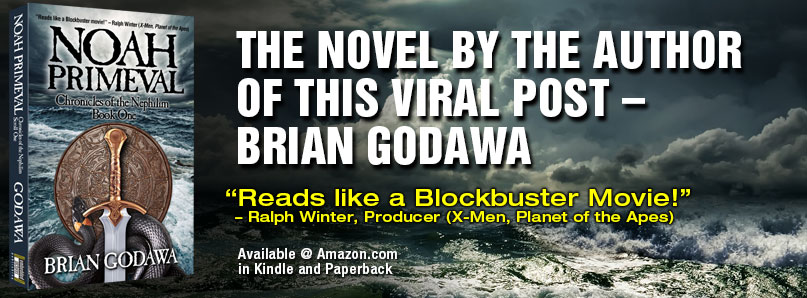
The Noah Movie: How To Watch It with Wisdom and Discernment

In my last post, I addressed the issue of concern that some religious believers have about whether or not to see the new movie Noah by atheist director Darren Aronofsky. I explained that there was merit in both arguments to see or not to see the movie. I concluded that if you were not sure whether you wanted to see it or not, I will be blogging my own analysis of the movie after it opens on March 28. Or you can read other reviewers you respect before you make your decision.
I’m the Hollywood screenwriter and novelist who wrote the blog analyzing an early script of Noah that went viral. It was quoted by all the news outlets, mostly for its negative comments while ignoring the positive ones.
Why did I do it? Because I LOVE movies, and I see their potential for both good and bad influence on our cultural values. That’s why I wrote Hollywood Worldviews: Watching Films With Wisdom and Discernment. To help people decide for themselves what values and meanings they are ingesting in their media consumption.
But I’ve also studied the story of Noah for many years, wrote an Amazon category bestselling novel called Noah Primeval, and set up a website, www.noahprimeval.com for all things Noah. My fans want to know about these things, and so do I.
Things To Look For
Most movies are a mixture of good and bad. But discerning that difference can be difficult without a more informed approach to understanding how storytelling and film embodies worldviews and meaning. So, if you’ve decided to watch the movie, I wanted to offer up some ideas to keep in the forefront of your mind as you watch. These will help you understand and appreciate what you like about the movie and be able to discern what you may not like about it for your discussion with others.
Have Some Tolerance For Creative License And Fantasy In The Story
Some hyper-literalists are already complaining that the movie doesn’t follow the details of the Bible. But some of those details are either not relevant or subject to differing interpretation. So chill out.
Take for instance, one example some have talked about. The Bible says that “eight persons were brought safely through water” (1 Peter 3:20). That is, Noah, his wife and three sons, and their three wives. But some hyper-literalists have yelped that in the movie, only six people are in Noah’s family on the ark. Two wives are missing.
The problem with this criticism is its lack of imagination. We find out that one of the daughters is pregnant with twins, which will be the two wives of the other two sons. So, if you are a Pro-Life Christian, then you have to acknowledge that that is technically the eight persons on board, including the four wives. Unless you want to deny the humanity and personhood of the unborn.
Watch The Hero’s Character Arc (not Ark)
The details that really do matter are the ones that reflect the meaning or worldview of the story. And those can be found in paying close attention to the hero’s journey. In storytelling, the hero’s journey is the incarnation of the meaning of the story.
The hero starts out as someone we root for and so we learn to see the world through his eyes by our identifying in sympathy with him. But the hero has an inner flaw, something wrong about the way he sees the world. This flaw results in him making some bad choices. So even though he is sympathetic, we still see he has a goal that he pursues for flawed reasons. As he pursues that goal, he is blocked by obstacle after obstacle, including the villain, that thwarts him at every turn.
The story builds until the point where the hero appears that he will never achieve his goal. When all hope is lost, he faces the truth about himself and gains the inner understanding of his flaw that allows him to achieve what he really needs instead of what he wants. He then embraces this truth, changes and finds the strength to do the right thing at the end. This is the redemption of the hero.
What Is The Hero’s Character Arc In Noah?
Noah was a righteous man of faith. But he was not sinless like Jesus Christ. Noah was a sinner, and therefore had character flaws. The Bible reveals Noah’s drunkenness after the Flood for instance (Genesis 9:21).
So look for Noah’s character flaw in the story and you will understand the meaning that the storyteller is conveying through the hero’s discovery of that flaw. What Noah learns by the end of the film is the moral premise of the story.
How does Noah see the world in the beginning of the story?
As the story moves, what is apparently wrong about the way that Noah sees the world?
What is the villain’s motivation for fighting Noah? This will be the worldview that the storyteller is trying to criticize as wrong or evil.
What is the catalyst that helps Noah to see he is wrong near the end of the story?
How does he change his view about the world or himself and why?
What does he do differently at the end to show a changed life?
The problem with some movies is how dark and unsympathetic the heroes can be. Ask yourself is Noah’s flaw too extreme? Does it make him unsympathetic to you? Why or why not?
That is how the storyteller influences us to see the world through the eyes of the hero with whom we sympathize or identify with.
Bonus Questions About God
God is a tough character to depict in film. Too direct and it seems cheesy, too indirect and it seems like God could be the delusions or dreams of a religious nut.
How is God depicted in the movie?
Does he have a real presence or is he depicted more as a belief that could be explained as self-made dreams or delusions?
Why is God ultimately judging the world? Many sins will surely be depicted, but is man’s sin against God the primary reason or is it man’s “misuse” of the environment?
Since Aronofsky is an atheist and does not believe man is created in God’s image, but rather that God is created in man’s image, how do you think that worldview informs his take on the sacred story of Noah?
Brian Godawa. Hollywood screenwriter and author of the Amazon bestselling novel, Noah Primeval, a Biblical fantasy with creative license that retells the Noah story without a modern secular or environmentalist agenda.
The Noah Movie: To See or Not To See?
With all the controversy surrounding the new Noah movie, many Christians, Jews, and Muslims are wondering whether they should go see the movie that was directed by atheist Darren Aronofsky and stars Russell Crowe in the lead role as the sacred mariner.
On the one side are the cultural anorexics who demand that a movie about the Bible should follow every jot and tittle detail from the Bible as they interpret it, without any creative license. They tend to yell “boycott!” and seem so hyper-literal in their views that they often miss the deeper poetic meaning of much figurative language in Scripture.
On the other side are the cultural gluttons who tell religious believers to shut up and go see the movie, and be happy with what Hollywood gives us instead of complaining. They tend to lump all criticism into the “angry reactionary Christian” stereotype and seem to be more against their own spiritual family members than the world that rejects their Savior.
I feel like I’m in between those two extremes. I’m the Hollywood screenwriter and novelist who wrote the blog analyzing an early script of Noah that went viral. It was quoted by all the news outlets, mostly for its negative comments while ignoring the positive ones.
Why did I do it? Because I LOVE movies, and I see their potential for both good and bad influence on our cultural values. That’s why I wrote Hollywood Worldviews: Watching Films With Wisdom and Discernment. To help people decide for themselves what values and meanings they are ingesting in their media consumption.
But I’ve also studied the story of Noah for many years, wrote an Amazon category bestselling novel called Noah Primeval, and set up a website, www.noahprimeval.com for all things Noah. My fans want to know about these things, and so do I.
To See or Not To See?
On the one hand, there is the argument that we should not give our money to Hollywood studios who will only be encouraged to make more movies that twist our sacred stories unless they listen more carefully to their audiences. It seems Christians are the only politically correct victims that are still acceptable to villainize in the media. These Christians supported The Passion of the Christ and Son of God, but they question Noah and the upcoming Exodus movie by atheist director Ridley Scott. They are not the intolerant bigots that some want to make them out to be. They care about their sacred story being subverted into a secular worldview. That is a legitimate concern.
But on the other hand, I also understand the argument that this movie is an opportunity to engage with the culture. Good or bad movie that it will be, Noah is opening the discussion about a topic that is normally ignored or scoffed at in our culture. This is a Gospel opportunity like never before. Christians can and should seize the moment to talk about the God of Noah who rescues us through the ark of Jesus Christ from our sins.
Now, you can’t very well talk intelligently about a movie you haven’t seen. People won’t respect your view if you haven’t. But if you have seen it, then you can show people how actually open-minded Christians are by saying what you liked and did not like about the movie. After all, no movie is all bad or all good. Most are mixed bags of good and bad. You can explain where you think the movie diverts from the Bible. You can encourage them to read the original story, since everyone knows the book is usually better than the movie (Except for Forrest Gump and the Godfather). And you can do so respectfully and with a winsome attitude of tolerance that atheists usually do not have for you.
I will be seeing it because I am a screenwriter and blogger about movies to help forward the conversation about the worldviews and meanings of movies. And of course, I have my own Noah Primeval novel and website, so my fans want to know. Plus, I don’t have to agree with everything in a movie to appreciate what is good in it.
So my advice is that if you really don’t trust Hollywood or are not sure you do in this particular case, then keep an eye on my Movieblog, because I will be writing a review on the opening release date of the movie with my analysis. Until then, I can’t recommend or not recommend a movie because I haven’t seen it.
If you do want to see the movie, then on the next post, I will give advice on the kind of things to look for when watching a movie to determine the worldview and values it is espousing through the art of storytelling. It’s not always obvious, but it is always there.
Brian Godawa. Hollywood screenwriter and author of the Amazon bestselling novel, Noah Primeval.
Noah Facts #10: The Book of Enoch, Watchers and Giants
With all the talk about the movie Noah starring Russell Crowe, I thought I would add to the conversation so you can be prepared to watch the movie with wisdom and discernment.
I’ve written a Biblical fantasy novel called Noah Primeval. I’ve researched this topic extensively. Noah Primeval has been a category bestseller on Amazon for 3 years. It’s first in a series of novels called Chronicles of the Nephilim.
The Fascinating Case of the Book of Enoch
One of the most fascinating cases of Biblical appropriation of non-canonical texts is the New Testament references to the book of 1 Enoch. Written sometime around the third to second century B.C., this text has both haunted and been cherished by the Christian Church through its history. It is apocalyptic in genre; cloaking warnings of judgment in dream visions, parables, and complex allegorical imagery. But it is most well-known for its detailed elaboration of the Genesis 6 story about the Sons of God (called “Watchers”) and their intimate involvement in the cause of the Noachian Flood.
There it describes in much detail the Watchers as fallen angels revealing occultic secrets to mankind, having intercourse with human women, and birthing giants who cause terror across the land. (1) Here is just a sample of passages that tell that story in much more vivid detail than Genesis 6:
Enoch 6:1-2
In those days, when the children of man had multiplied, it happened that there were born unto them handsome and beautiful daughters. And the angels, the children of heaven, [the Watchers] saw them and desired them; and they said to one another, “Come, let us choose wives for ourselves from among the daughters of man and beget us children.”
Enoch 7:1-8:3, 19:1
And they took wives unto themselves, and everyone respectively chose one woman for himself, and they began to go unto them… And the women became pregnant and gave birth to great giants.
These giants consumed the produce of all the people until the people detested feeding them. So the giants turned against the people in order to eat them. And they began to sin against birds, wild beasts, reptiles, and fish. And their flesh was devoured the one by the other, and they drank blood. And then the earth brought an accusation against the oppressors.
And Azaz’el [the Watcher] taught the people the art of making swords and knives, and shields, and breastplates… and alchemy…[or transmutation: Ancient Ethiopian commentators explain this phrase as “changing a man into a horse or mule or vice versa, or transferring an embryo from one womb to another.”] Amasras taught incantation and the cutting of roots; and Armaros the resolving of incantations; and Baraqiyal astrology, and Kokarer’el the knowledge of the signs, and Tam’el taught the seeing of the stars…
The angels which have united themselves with women. They have defiled the people and will lead them into error so that they will offer sacrifices to the demons as unto gods.
Enoch 10:4, 11-12; 54:6
the Lord said to Raphael, “Bind Azaz’el hand and foot and throw him into the darkness!” And he made a hole in the desert which was in Duda’el and cast him there…And to Michael [the archangel] God said, “Make known to Semyaza [the Watcher] and the others who are with him, who fornicated with the women, that they will die together with them in all their defilement…bind them for seventy generations underneath the rocks of the ground until the day of their judgment and of their consummation, until the eternal judgment is concluded… on account of their oppressive deeds which (they performed) as messengers of Satan, leading astray those who dwell upon the earth.” (2)
Though 1 Enoch is not in the Western canon of Scriptures, it is in the Eastern Ethiopic canon, and was respected by Christian scholars and authorities throughout the early church. It was never considered heretical by church authorities.
But the real kicker is that the New Testament even refers favorably to the book of Enoch and its tradition of fallen angels cohabiting with humans which results in their punishment of binding (1Pet. 3:19-20; 2Pet. 2:4-10; Jude 6-14).
First, Jude quotes the book of 1 Enoch outright when he writes of false teachers corrupting the church:
Jude 14-15
It was also about these that Enoch, the seventh from Adam, prophesied, saying, “Behold, the Lord comes with ten thousands of his holy ones, to execute judgment on all and to convict all the ungodly of all their deeds of ungodliness that they have committed in such an ungodly way, and of all the harsh things that ungodly sinners have spoken against him.”
Here is the text from the actual book of 1 Enoch that Jude is quoting:
1 Enoch 1:9
“And behold! He cometh with ten thousands of His holy ones to execute judgement upon all, and to destroy all the ungodly: And to convict all flesh of all the works of their ungodliness which they have ungodly committed, and of all the hard things which ungodly sinners have spoken against Him.” (3)
But not only does Jude explicitly quote a passage out of 1 Enoch regarding God coming with the judgment of his divine council of holy ones (Sons of God), but all three texts refer to the Enochian notion of the angelic Watchers’ punishment for co-habiting with humans as a violation of the divine/human separation; another main theme of 1 Enoch.
1Pet. 3:18–20
[Christ], being put to death in the flesh but made alive in the spirit, in which he went and proclaimed to the spirits in prison, because they formerly did not obey, when God’s patience waited in the days of Noah.
Jude 6-7
And angels who did not keep their own domain, but abandoned their proper abode, He has kept in eternal bonds under darkness for the judgment of the great day, just as Sodom and Gomorrah and the cities around them, since they in the same way as these indulged in gross immorality and went after strange flesh, are exhibited as an example in undergoing the punishment of eternal fire.
2Pet. 2:4-10
For if God did not spare angels when they sinned, but cast them into hell [Tartarus] and committed them to pits of darkness, reserved for judgment; and did not spare the ancient world, but preserved Noah…and if He condemned the cities of Sodom and Gomorrah to destruction by reducing them to ashes, having made them an example to those who would live ungodly lives thereafter… then the Lord knows how to…keep the unrighteous under punishment for the day of judgment, and especially those who indulge the flesh in its corrupt desires and despise authority.
The New Testament literary reference to non-canonical sources does not mean those sources are the inspired Word of God, nor that everything in them is true; but it certainly does illustrate that the Bible itself draws meaningfully and favorably from interpretive traditions that engage in imaginative embellishment of Biblical stories. Unlike some Christians, God does appreciate creative imagination.
Jude’s references to the book of Enoch are not limited to material citations. He uses the same poetic phraseology throughout his letter that indicates an intimate interaction with the entirety of 1 Enoch on the incident of the Watchers and their condemnation. Researcher Douglas Van Dorn has put together a helpful chart of these linguistic comparisons. (4)
1 Peter 3:18-20 speaks of Christ going down into Hades to proclaim his triumph to the “spirits imprisoned” at the time of the flood. This act appears to be a typological replay of Enoch’s own vision journey into Hades to see the “prison house of the angels” who disobeyed at the flood (1 Enoch 21:9-10).
But the story does not yet end there. You will notice that the location of punishment and binding of the fallen angels that we have already seen in 2 Peter is Tartarus in the Greek.
2Pet. 2:4
For if God did not spare angels when they sinned, but cast them into hell [tartarus] and committed them to pits of darkness, reserved for judgment.
What is important to realize is that the Greek word translated as “hell” in this English translation is not one of the usual New Testament Greek words for hell, gehenna or hades, but tartarus.
Readers may be familiar with the Greek myth of Tartarus as the place where the Titans were imprisoned by the gods. Obviously, Peter does not affirm Greco-Roman polytheism by referring to Tartarus, but he is alluding to a Hellenistic myth that his readers, believer and unbeliever alike, would be very familiar with, subverting it with the Jewish traditional interpretation.
Extrabiblical Second Temple Jewish legends connected this legend of gods and bound Titans in Tartarus to the bound angelic Watchers and punished giants of Genesis 6.
Sibylline Oracles 1:97-104, 119
enterprising Watchers, who received this appellation because they had a sleepless mind in their hearts and an insatiable personality. They were mighty, of great form, but nevertheless they went under the dread house of Tartarus guarded by unbreakable bonds, to make retribution, to Gehenna of terrible, raging, undying fire…draping them around with great Tartarus, under the base of the earth. (5)
Other well-known Second Temple literature reiterated this binding in the heart of the earth until judgment day:
Jubilees 4:22; 5:10
And he wrote everything, and bore witness to the Watchers, the ones who sinned with the daughters of men because they began to mingle themselves with the daughters of men so that they might be polluted…
And subsequently they [the Watchers] were bound in the depths of the earth forever, until the day of great judgment in order for judgment to be executed upon all of those who corrupted their ways and their deeds before the LORD. (6)
This “binding” or imprisoning of supernatural beings in the earth is expressed in 2 Peter’s “cast into pits of darkness reserved for judgment” (3:19), 1 Peter’s “disobedient spirits in prison” (v. 6), and Jude’s “eternal bonds under darkness for the judgment of the great day” (2:4).
Yes, indeed, the New Testament does use 1 Enoch as a source for its own canonical writings. The preponderance of evidence shows that not only does the New Testament letter of Jude quote directly from 1 Enoch 1 (Book of the Watchers), but the entire letter and its alternate version in 2 Peter, show signs of literary and theological dependency on the rest of the Book of the Watchers (Chaps. 1-36), as well as chapter 80 (Book of Luminaries), chapter 46 (Book of Parables), and chapter 100 (Epistle of Enoch). 2 Peter shows evidence of structural and thematic dependency on 1 Enoch 17-22 and 108 (Additional Books). But the fact is, the entire New Testament shows such a multitude of allusions and linguistic echoes of the entire corpus of 1 Enoch, that one can safely say, the book and its basic interpretations may not be Scripture, but are surely legitimated by the Bible and are therefore worthy of study and high regard by the Christian Church.
FOOTNOTES
1. 1 Enoch chapters 1-36 is called the “Book of the Watchers” and deals with this material. The book of Jubilees is another respected text that contains a detailed retelling of the Noah story with Watchers cohabiting with women, and birthing giants. See Jubilees 4-10 and 20:4-5.
2. James H. Charlesworth, The Old Testament Pseudepigrapha: Volume 1, (New York; London: Yale University Press, 1983) 16-18, 38.
3. Pseudepigrapha of the Old Testament, ed. Robert Henry Charles, Enoch 1:9 (Bellingham, WA: Logos Research Systems, Inc., 2004) 14.
4. Douglas Van Dorn, (2013-01-21). Giants: Sons of the Gods (Kindle Location 4850). Waters of Creation. Kindle Edition.
5. James H. Charlesworth, The Old Testament Pseudepigrapha: Volume 1 (New York; London: Yale University Press, 1983), 337.
6. James H. Charlesworth, The Old Testament Pseudepigrapha and the New Testament, Volume 2: Expansions of the “Old Testament” and Legends, Wisdom, and Philosophical Literature, Prayers, Psalms and Odes, Fragments of Lost Judeo-Hellenistic Works (New Haven; London: Yale University Press, 1985), 62, 65.



